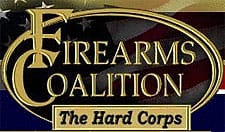Another Brick in the Wall SCOTUS Incorporates the Second Amendment
By Jeff Knox

Manassas, VA –-(Ammoland.com)- (Washington DC, June 29, 2010) The Supreme Court of the United States delivered another victory to the Constitution and the Bill of Rights Monday when they declared Chicago’s handgun ban to be unconstitutional in the case of McDonald et al v. Chicago.
The real question in the case, which was managed and funded by the Seattle-based Second Amendment Foundation, was whether the Second Amendment to the Constitution restricts only the federal government or whether it also applies to state and local jurisdictions. In a 5-4 decision the Court majority held that the Second Amendment did indeed apply to the states under provisions of the 14th Amendment.
McDonald marks the second landmark Supreme Court victory for Second Amendment supporters (and lead attorney Alan Gura) in just 3 years. In June 2008 the Court’s Heller decision overturned Washington, DC’s handgun ban and declared that the Second Amendment refers to an individual right to keep and bear arms, but they were careful to keep their opinion very narrowly focused on just the circumstances represented in that case – gun bans in a federal enclave. With McDonald the impact spreads to encompass every level of government in every state in the Union. But, as in Heller, the Court was careful to include language supporting some limitations on the right, leaving gun control advocates hopeful that they can continue their harassment campaign against gun owners, and leaving rights advocates wondering what is ambiguous about the phrase “the right of the people to keep and bear arms, shall not be infringed?”
The Court’s 5-4 split in this case was disheartening, just as their identical split in Heller was. When the McDonald case was argued I predicted that the final decision would be split and that there would be several separate concurring and dissenting opinions. I was right about that as there were three written opinions in favor of the decision and two in opposition. I had hoped for a more favorable split of 6-3 or even 7-2 in this case since it really was an obvious conclusion, but just as I did before the Heller case, I underestimated the lengths to which some Supreme Court Justices will go to reach the conclusion they wish to reach regardless of the evidence before them.
Of all of the 9 Justices and their 5 concurring and dissenting opinions, only Justice Clarence Thomas really got it right. Justice Thomas joined with Chief Justice Roberts and Justices Scalia, Kennedy, and Alito in declaring the Second Amendment applies to the states and overturning Chicago’s handgun ban as a violation of that amendment, but only Justice Thomas based his decision on the Privileges or Immunities clause of the 14th Amendment rather than the Due Process clause that the others relied on.
As a practical matter the mechanism used to apply the right to arms to the states makes little difference. What matters is that it is applied. The application doesn’t change one way or the other, but many constitutional scholars were hoping that this case would be the key to correcting an outrageous opinion of the Court from 137years ago which emasculated the, then new 14th Amendment and paved the way for Jim Crow laws in the post-Reconstruction South.
Along with the majority opinion written by Justice Alito and the divergent concurrence written by Justice Thomas, Justice John Paul Stevens filed a rambling contradictory dissent, Justice Scalia wrote a scathing rebuttal to Stevens dissent, and Justice Breyer authored a dissent which was joined by Justices Ginsburg and Sotomayor.
I had expected emotional nonsense from Justice Stevens whose hoplophobia is worn on the sleeve of his robe, but I had thought that Justices Ginsburg and Breyer might at least concur with Justice Thomas’ position on the Privileges or Immunities clause of the 14th Amendment even if they went on to weasel out of actually applying the Second Amendment to the states and throwing out Chicago’s handgun ban. Instead they simply hid behind a few specious arguments and refused to treat the right to arms as a real right. The dissent is outrageous enough to remove all doubt as to Sonya Sotomayor’s animosity toward the Second Amendment and should fuel opposition to confirmation of Elena Kagan who worked on gun control policy in the Clinton Administration and once lumped NRA in with the KKK as “Bad Guy Orgs.”
In the final analysis, the McDonald decision is just one more brick in the wall being built to protect the right to arms. It’s a big, heavy brick which, combined with Heller, serves as a good foundation. The court cases will continue as the lawyers and judges try to sort out just what restrictions might be allowable under the Second Amendment’s “shall not be infringed” edict, but the real fight remains, as it always has, in the political arena and the election of politicians who have a healthy respect and understanding of Second Amendment issues and firearms ownership.
About:
The Firearms Coalition is a loose-knit coalition of individual Second Amendment activists, clubs and civil rights organizations. Founded by Neal Knox in 1984, the organization provides support to grassroots activists in the form of education, analysis of current issues, and with a historical perspective of the gun rights movement. The Firearms Coalition is a project of Neal Knox Associates, Manassas, VA. Visit: www.FirearmsCoalition.org
